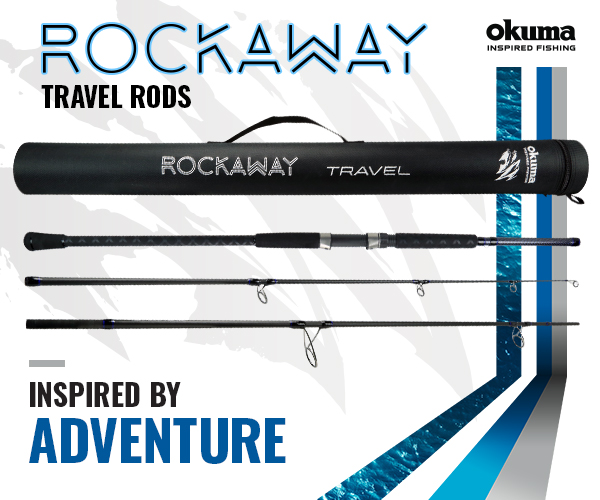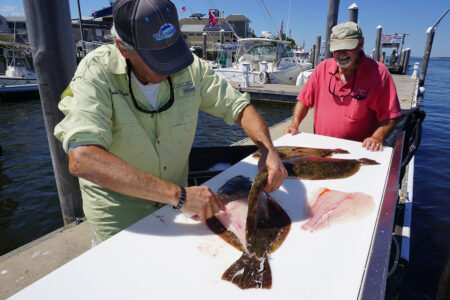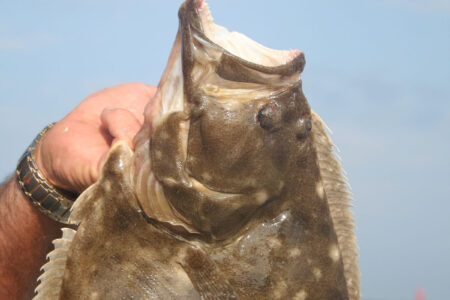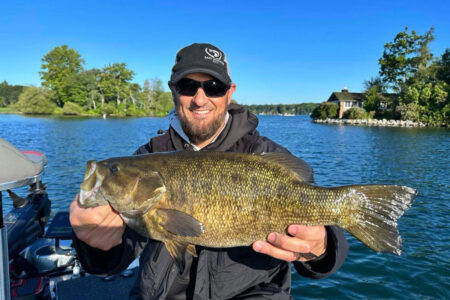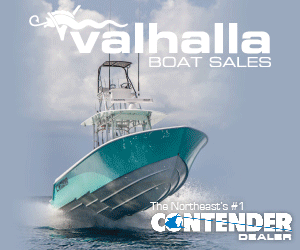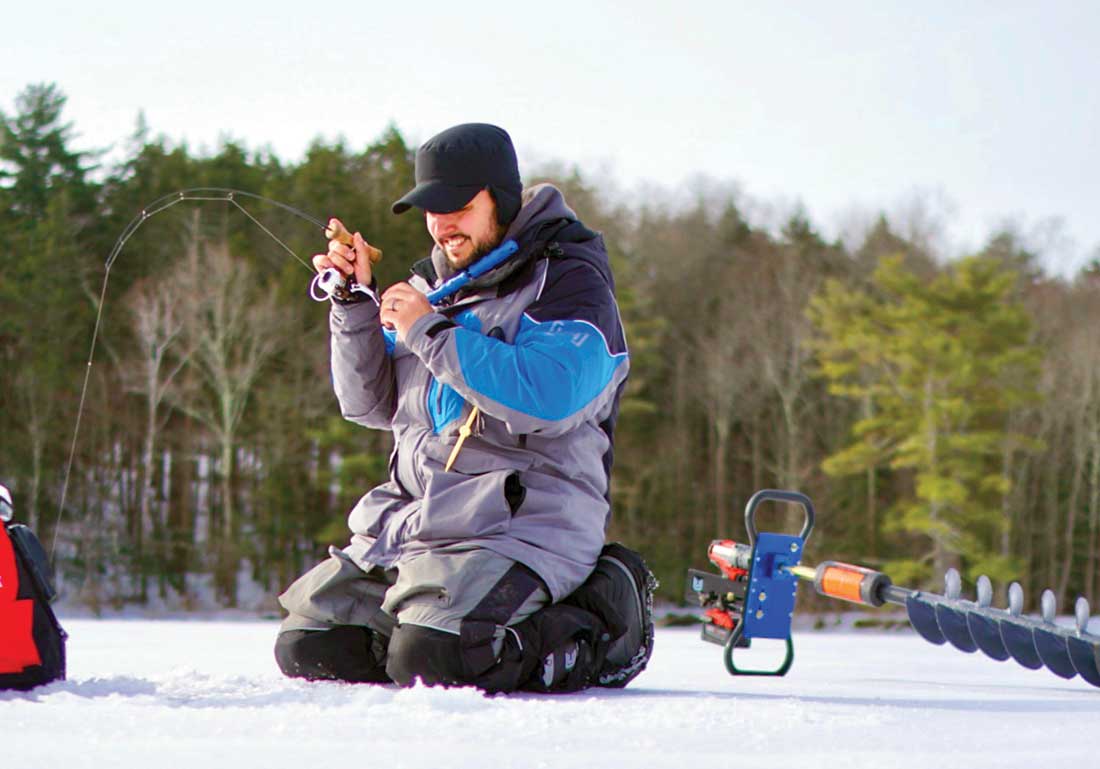
Know how to decide between keeping mobile and staying to put to ice more fish this winter.
One of the biggest questions facing jig fishermen on the ice is how long to stay at a particular hole and when to move. Unfortunately, there isn’t a simple answer to this question. Understanding structure and the area you are fishing can help steer you in the right direction when facing the decision to make a move or not. Having the correct gear for each situation will translate into a more successful day on the ice. It’s all about being prepared for whatever a particular body of water will throw at you on any given day and being able to adapt to those different situations in order to put fish on the ice.
When fishing an area with a steep drop-off, hump, brush pile, or any type of definitive structure, you will often find yourself fishing over one particular spot. In this scenario, you may find yourself running and gunning onto different parts of the structure looking for “hot” holes and large groups of fish holding to that particular structure. This structure often holds fish tight to it, and in most cases the fish are not roaming. They instead stay on or near the area and wait to feed on a school of bait that swims past. If you find structure that is not holding fish then it is time to move and find another spot that has active fish holding close to it. With this style of fishing, I drill a grid of holes directly over the structure and move from hole to hole until I find one that seems to be holding the most fish and stay there until the bite slows down.
One of my favorite local lakes contains submerged brush piles about 6 to 8 feet in diameter. These brush piles are scattered around a large cove in the lake. While fishing there I drill a lot of holes and hop around from hole to hole until I find one of these brush piles where I typically find a pile of aggressively-feeding pan fish. Staying mobile and finding structure will often yield a great day of fishing on the ice.
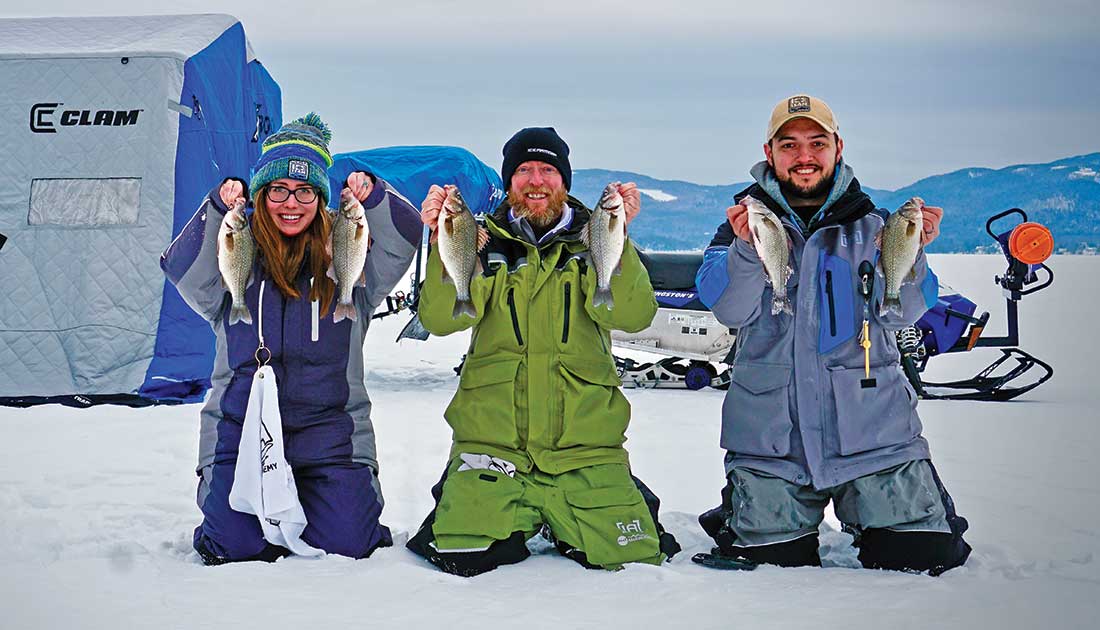
When I am hole hopping I like to use specific equipment that helps me stay mobile and gives me the best opportunity to have a successful day. When searching for a productive hole, I use a longer rod that allows me to remain standing and make a quick decision on whether to stay or go. Because this style of fishing requires you to keep mobile, you often don’t have the luxury of a warm hub style shelter. It is for this reason that braided line is often not a great choice as it retains water and will freeze out in harsh conditions. Monofilament and fluorocarbon are the best choices for hole hopping. A lightweight sled or flip-over style shelter can help you stay mobile on the ice and makes it easier for you to move from spot to spot. These sleds are light enough to drag around but contain everything you need to stay mobile and be successful on the ice.
Advances in the development of ice augers has allowed anglers to use extremely lightweight electric augers out on the ice. These electric or cordless drill-powered augers, like the K-Drill, are in many cases less than half the weight of traditional gas augers. This really makes a difference when hole hopping and dragging all that extra weight around with you. So, when mobility is the name of the game, it is important to shed as much weight as possible so that you’re more likely to make the necessary moves in order to stay on top of active structure that is holding fish.
Fishing a basin or a weed edge where fish are cruising around looking for a meal rather than staying in one spot waiting for their meal to come to them, is very different. Often schools of fish will roam and move along these basins, weed edges, and expansive flats pushing schools of bait around the area. Trying to stay on top of the school or predict their next movement can be very difficult and frustrating for anglers. In this scenario, it is usually best to stay put and wait for the school of fish to come to you. You may find yourself fishing a hole with little success and then the school circles around toward you and you have a flurry of action that coincidently dies just as quickly as it came alive. When fishing in these types of conditions, I use large-profile jigs or spoons to help pull fish from a distance towards me. Glow colors in low-light situations can help catch a fish’s attention from a distance and bring them in to you. In clear water situations, metallic colors work great to reflect light and catch a fish’s attention.
Locating pinch points or inside turns can help put you in the best position to ambush a school of fish as it swims by. Fish that are roaming or cruising around a basin will often chase bait around a topographic turn where it is your advantage to be waiting for them. White perch, for example, are a schooling fish that move quickly around a lake chasing bait. While fishing with a good friend on a recent trip to Lake Winnipesaukee, we were fishing a basin and were set up about 30 to 40 yards away from each other. For a quick moment my friend would have a whole school of white perch under him and he picked away at a flurry of fish until his Vexilar went blank and no sooner would my screen light up with fish. This continued for some time with neither of us moving and just waiting for that school to circle back our way as they pushed bait around the basin. In this situation, patience paid off, as waiting for those fish to circle around to us was far more productive than trying to chase them around and predict their next move.
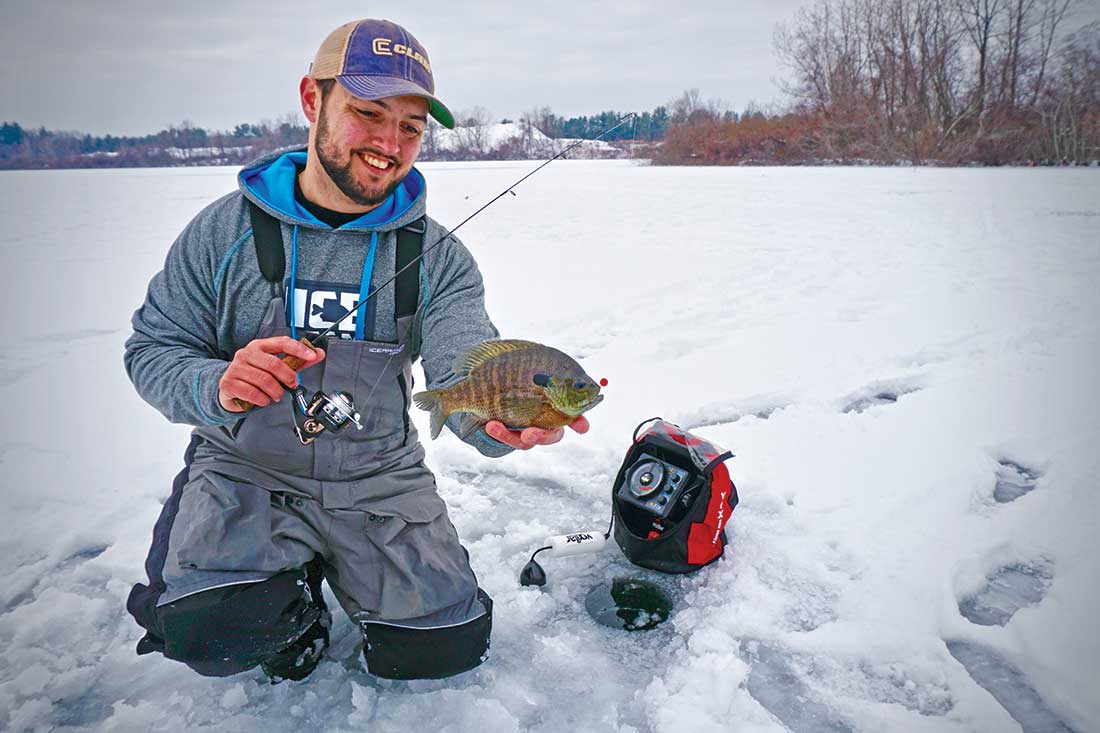
Equipment used for this style of fishing is a little bit different. When fishing for basin fish or fish that are on the move, I stay in one spot and wait for the fish to come to me. For this reason, I find a shorter rod, which allows me to sit at a comfortable distance from my hole, works best. The species you are targeting and your own personal style of fishing will also affect rod length, but ultimately you should find a rod that is comfortable for you.
When targeting roaming fish, I set up a large hub-style shelter. In this case, I don’t make big moves and stay in a spot for most of the day. These large pop-up shelters allow your whole fishing party to be warm and comfortable all day long on those cold winter days. When fishing indoors, a braided main line can be a great choice as the heat inside the shelter will prevent the water that is absorbed into the line to freeze. The lack of stretch in braided line gives you better feel of your presentation and allows you to set the hook much quicker and with a shorter hook-set.
Because you will be calling fish in from a distance or as they are passing by, you will want to catch their attention and bring them to you. Large spoons with erratic movements and noises are often used to help bring the fish in. One of my favorite spoons is the Clam Rattlin’ Blade Spoon. This spoon drops quickly to the strike zone and the rattle inside drives fish crazy, bringing them in from further distances to investigate what is going on.
Unfortunately, there is no one clear-cut method that will always produce fish day in and day out, and different situations will require you to change up your technique to be successful as each day on the ice is a learning experience. Pay attention to what worked on a specific day and ask yourself “why?” Learning and growing from different situations is important to a successful day on the ice but ultimately, getting out there and having a good time is what it’s all about!
